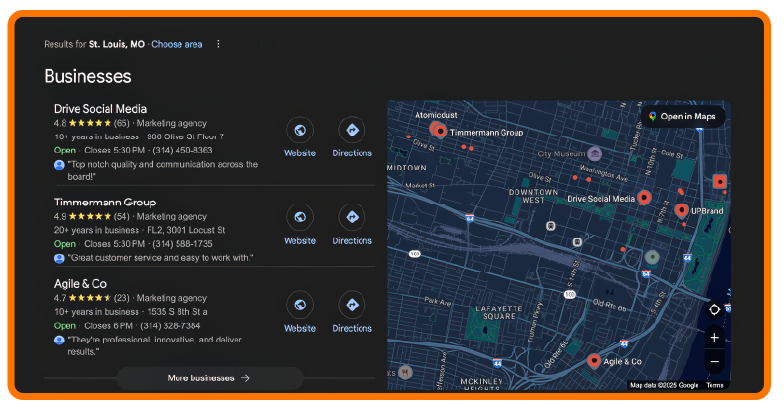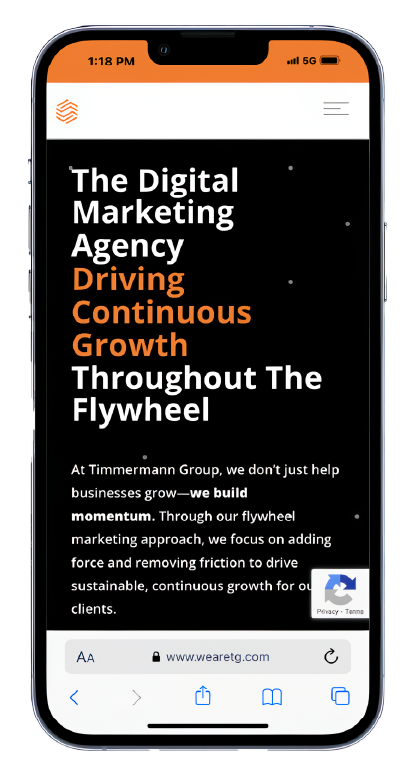Local SEO Best Practices 2025
If you’ve ever searched for a coffee shop, plumber, or boutique in your city, you’ve probably noticed that some businesses seem to show up everywhere. Google Maps, the top three local listings, and even in featured articles.
That’s no accident.
Those businesses have likely mastered local SEO best practices, and as a result, they’re winning more customers right in their own backyard.
The truth is, no matter how great your products or services are, if people can’t find you when they search locally, you’re leaving money on the table. Local SEO bridges that gap by making sure your business shows up where nearby customers are looking.
Local SEO Best Practices for Boosting Your Business Visibility
Let’s walk through the best local SEO techniques you can start using today, with practical steps that go beyond the basics.
1. Start with Your Google Business Profile
Think of your Google Business Profile as your business’s storefront on the internet. It’s the listing that appears when someone searches for you (or for a service you offer) on Google or Google Maps. A fully optimized GBP can make the difference between being buried on page three and appearing in the coveted local “3-pack” at the top of search results.
For example, when someone searches “Marketing Agency St. Louis,” here’s what they see.

Start by claiming your profile if you haven’t already. Then, fill in every detail. Exact business name, address, phone number, website, hours, and business categories. Write a clear, engaging business description that naturally incorporates your target keywords. Remember this isn’t a one-and-done task. Update your profile regularly with fresh photos, seasonal hours, and posts about events, promotions, or news.
2. Keep Your NAP Information Consistent Everywhere
NAP stands for Name, Address, and Phone number, and it needs to be identical everywhere your business appears online. Why is this so important? Because search engines use consistent information as a trust signal. If your address or business name varies from one site to another, it can confuse both customers and Google, potentially hurting your local rankings. Think things like “Rd.” in one listing, “Road” in another, or a slightly different phone number.
3. Optimize Your Website with Local Intent in Mind
Your website is still at the heart of your local SEO strategy, and optimizing it for location-based searches is an important step that shouldn’t be overlooked. This means weaving location-specific keywords into the most important parts of your site: title tags, meta descriptions, headings, and on-page copy.

For example, instead of only targeting broader terms like “marketing agency,” you’d want to refine them to “best st louis marketing agency” or “digital marketing agency st louis.”
Create dedicated service pages for each location you serve. If you have multiple locations, consider a separate page for each to ensure you’re visible in each area’s search results.
Remember, Google isn’t matching keywords. It’s matching intent. When someone searches for a specific keyword, they want relevant, nearby results. Make sure your site clearly communicates where you are and what you offer.
4. Create Content That Speaks to Your Community
One of the best local SEO tips we can give is to create content that shows you’re actually connected to your area. That might mean writing blog posts about local events, offering guides to neighborhood resources, or highlighting community partnerships.
If you’re a wedding photographer, for example, you could write about “Top Outdoor Wedding Venues in Denver” and include your own images from those locations. If you run a bike shop, you might post about “Best Cycling Routes in Portland.” Not only does this type of content help with local SEO, but it also positions you as an authority in your field.
5. Build High-Quality Local Citations and Backlinks
Local citations, or mentions of your NAP on other websites, are still a key ranking factor for local SEO. Getting listed in reputable local directories, chambers of commerce websites, and industry-specific sites helps search engines confirm your legitimacy.
But do you know what’s even better? Earning backlinks from local sources. A feature in a neighborhood news site, a sponsorship mention on a community event page, or a guest article on a local blog can all boost your authority in Google’s eyes. The more relevant and trustworthy the source, the more impact it has.

6. Ensure Your Site Works on Mobile
The majority of local searches happen on smartphones, often when a person is ready to convert. If your website is slow to load, hard to navigate, or doesn’t have click-to-call functionality, you’re losing business. A responsive design, clear navigation, and fast page speeds make it easy for mobile visitors to find what they need and contact you immediately.
7. Make Reviews Part of Your SEO Strategy
Reviews are a direct signal to search engines that your business is trusted and active. Encourage satisfied customers to leave reviews on Google, Yelp, and Facebook. Hand out review cards, include review requests in follow-up emails, or use QR codes that link directly to your review page.
Most importantly, respond to every review — good or bad. Thank customers for positive feedback, and address concerns with professionalism when criticism arises. Google looks favorably on active engagement, and potential customers will see you care about their experience.
Feeling buried under that to-do list? Yeah, most business owners do. Skip the learning curve entirely and let an LSO agency handle the heavy lifting.

